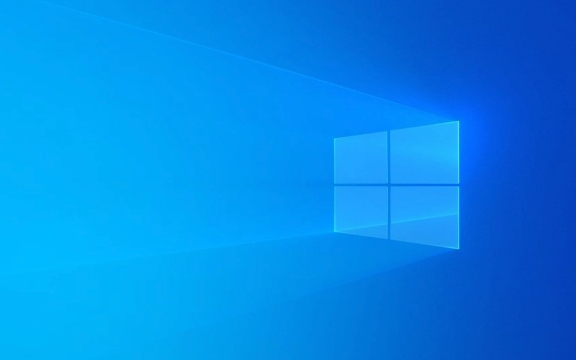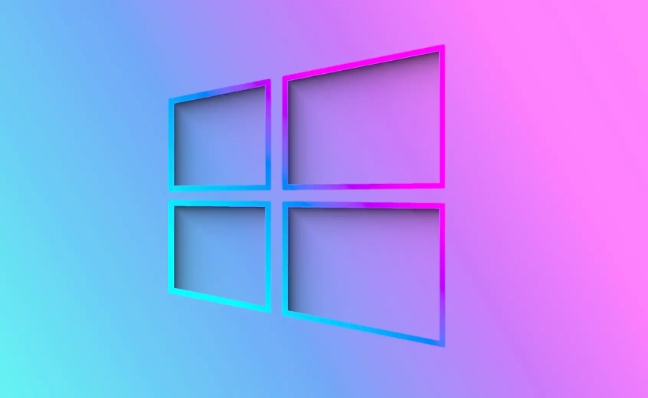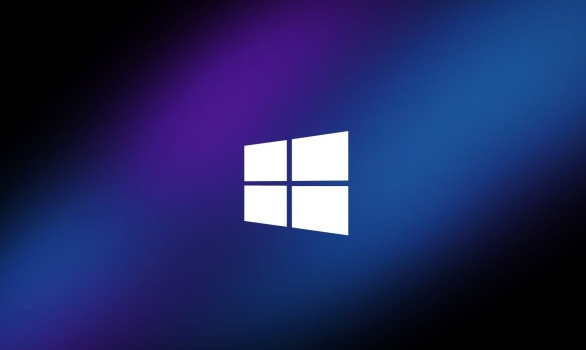To manage app permissions in Windows, go to Settings > Privacy & security (or Privacy in Windows 10), then adjust access for each category or app. 1. Open App Permissions Settings via Start > Settings > Privacy & security. 2. Manage Specific Permissions by Category—toggle system-wide access and individual app access under categories like Camera, Microphone, and Location. 3. Manage Permissions for Individual Apps by selecting "App permissions by app" or choosing an app in Apps & features, then adjusting its permissions. 4. Review built-in app access, note that desktop apps may bypass these controls, and remember that admin rights are separate from privacy permissions—regularly reviewing settings helps protect your privacy.

Changing app permissions in Windows lets you control what resources an app can access—like your camera, microphone, location, or files. This is especially useful for privacy and security. Here’s how to manage app permissions in Windows 10 and Windows 11.

1. Open App Permissions Settings
To get started:
- Press the Start button (Windows icon).
- Click on Settings (the gear icon).
- Go to Privacy & security (in Windows 11) or Privacy (in Windows 10).
- You’ll see a list of permission categories like Camera, Microphone, Location, Contacts, etc.
2. Manage Specific Permissions by Category
Each permission category lets you control access system-wide or per app.

For example, to manage Camera access:
- Click on Camera in the left sidebar.
- Toggle Camera access for the device on or off.
- Scroll down to "Let apps access your camera" and toggle that on or off.
- If enabled, you’ll see a list of apps under "Choose which apps can access your camera"—toggle individual apps as needed.
Repeat this process for other permissions like:

- Microphone
- Location
- Photos
- Videos
- Documents
- Calendar
- Contacts
? Note: Some permissions (like Contacts or Calendar) only appear if you have apps installed that request them.
3. Manage Permissions for Individual Apps
You can also view and change all permissions for a specific app:
- In Settings > Privacy & security > App permissions, scroll down and click "App permissions by app" (Windows 11), or go to Apps > Apps & features and select an app.
- Select the app you want to manage.
- Click on Permissions.
- Here, you’ll see all the system resources the app can access—toggle them on or off as desired.
For example, you might allow a video app to use the microphone but block it from accessing your location.
4. Additional Tips
- Default apps may have more access: Built-in apps like Camera, Voice Recorder, or Maps often have broader permissions. Review them if you're concerned about privacy.
- Store apps vs. desktop apps: Microsoft Store apps follow these permission rules. Traditional desktop apps (like Chrome or Steam) often bypass these controls and request access during installation or first launch.
- Run as administrator: Some apps need admin rights to function, but that’s separate from privacy permissions.
Managing app permissions doesn’t require third-party tools—Windows has it built in. Just take a few minutes to review which apps have access to sensitive features. It’s a simple way to tighten up your privacy.
Basically, go to Settings > Privacy & security, pick a permission or app, and adjust the toggles. Not complicated—just easy to overlook.
The above is the detailed content of How to change app permissions in Windows. For more information, please follow other related articles on the PHP Chinese website!

Hot AI Tools

Undress AI Tool
Undress images for free

Undresser.AI Undress
AI-powered app for creating realistic nude photos

AI Clothes Remover
Online AI tool for removing clothes from photos.

Clothoff.io
AI clothes remover

Video Face Swap
Swap faces in any video effortlessly with our completely free AI face swap tool!

Hot Article

Hot Tools

Notepad++7.3.1
Easy-to-use and free code editor

SublimeText3 Chinese version
Chinese version, very easy to use

Zend Studio 13.0.1
Powerful PHP integrated development environment

Dreamweaver CS6
Visual web development tools

SublimeText3 Mac version
God-level code editing software (SublimeText3)

Hot Topics
 Windows 11 slow boot time fix
Jul 04, 2025 am 02:04 AM
Windows 11 slow boot time fix
Jul 04, 2025 am 02:04 AM
The problem of slow booting can be solved by the following methods: 1. Check and disable unnecessary booting programs; 2. Turn off the quick boot function; 3. Update the driver and check disk health; 4. Adjust the number of processor cores (only for advanced users). For Windows 11 systems, first, the default self-start software such as QQ and WeChat are disabled through the task manager to improve the startup speed; if you use dual systems or old hardware, you can enter the power option to turn off the quick boot function; second, use the device manager to update the driver and run the chkdsk command to fix disk errors, and it is recommended to replace the mechanical hard disk with SSD; for multi-core CPU users, the kernel parameters can be adjusted through bcdedit and msconfig to optimize the startup efficiency. Most cases can be corrected by basic investigation
 How to Change Font Color on Desktop Icons (Windows 11)
Jul 07, 2025 pm 12:07 PM
How to Change Font Color on Desktop Icons (Windows 11)
Jul 07, 2025 pm 12:07 PM
If you're having trouble reading your desktop icons' text or simply want to personalize your desktop look, you may be looking for a way to change the font color on desktop icons in Windows 11. Unfortunately, Windows 11 doesn't offer an easy built-in
 Fixed Windows 11 Google Chrome not opening
Jul 08, 2025 pm 02:36 PM
Fixed Windows 11 Google Chrome not opening
Jul 08, 2025 pm 02:36 PM
Fixed Windows 11 Google Chrome not opening Google Chrome is the most popular browser right now, but even it sometimes requires help to open on Windows. Then follow the on-screen instructions to complete the process. After completing the above steps, launch Google Chrome again to see if it works properly now. 5. Delete Chrome User Profile If you are still having problems, it may be time to delete Chrome User Profile. This will delete all your personal information, so be sure to back up all relevant data. Typically, you delete the Chrome user profile through the browser itself. But given that you can't open it, here's another way: Turn on Windo
 How to fix second monitor not detected in Windows?
Jul 12, 2025 am 02:27 AM
How to fix second monitor not detected in Windows?
Jul 12, 2025 am 02:27 AM
When Windows cannot detect a second monitor, first check whether the physical connection is normal, including power supply, cable plug-in and interface compatibility, and try to replace the cable or adapter; secondly, update or reinstall the graphics card driver through the Device Manager, and roll back the driver version if necessary; then manually click "Detection" in the display settings to identify the monitor to confirm whether it is correctly identified by the system; finally check whether the monitor input source is switched to the corresponding interface, and confirm whether the graphics card output port connected to the cable is correct. Following the above steps to check in turn, most dual-screen recognition problems can usually be solved.
 Want to Build an Everyday Work Desktop? Get a Mini PC Instead
Jul 08, 2025 am 06:03 AM
Want to Build an Everyday Work Desktop? Get a Mini PC Instead
Jul 08, 2025 am 06:03 AM
Mini PCs have undergone
 Fixed the failure to upload files in Windows Google Chrome
Jul 08, 2025 pm 02:33 PM
Fixed the failure to upload files in Windows Google Chrome
Jul 08, 2025 pm 02:33 PM
Have problems uploading files in Google Chrome? This may be annoying, right? Whether you are attaching documents to emails, sharing images on social media, or submitting important files for work or school, a smooth file upload process is crucial. So, it can be frustrating if your file uploads continue to fail in Chrome on Windows PC. If you're not ready to give up your favorite browser, here are some tips for fixes that can't upload files on Windows Google Chrome 1. Start with Universal Repair Before we learn about any advanced troubleshooting tips, it's best to try some of the basic solutions mentioned below. Troubleshooting Internet connection issues: Internet connection
 How to get a free Windows 11 product key?
Jul 03, 2025 am 12:51 AM
How to get a free Windows 11 product key?
Jul 03, 2025 am 12:51 AM
You can use it temporarily by upgrading genuine Win10, using the education plan or not activating temporary use. Specifically, it includes: 1. Free upgrade from activated Windows 10 to Windows 11; 2. Students or specific organization members obtain authorization through the Microsoft Education Program; 3. Short-term tests can be used directly without activation, but their functions are limited; 4. Beware of free online key traps, and it is recommended to purchase authorization or confirm upgrade conditions through formal channels.







